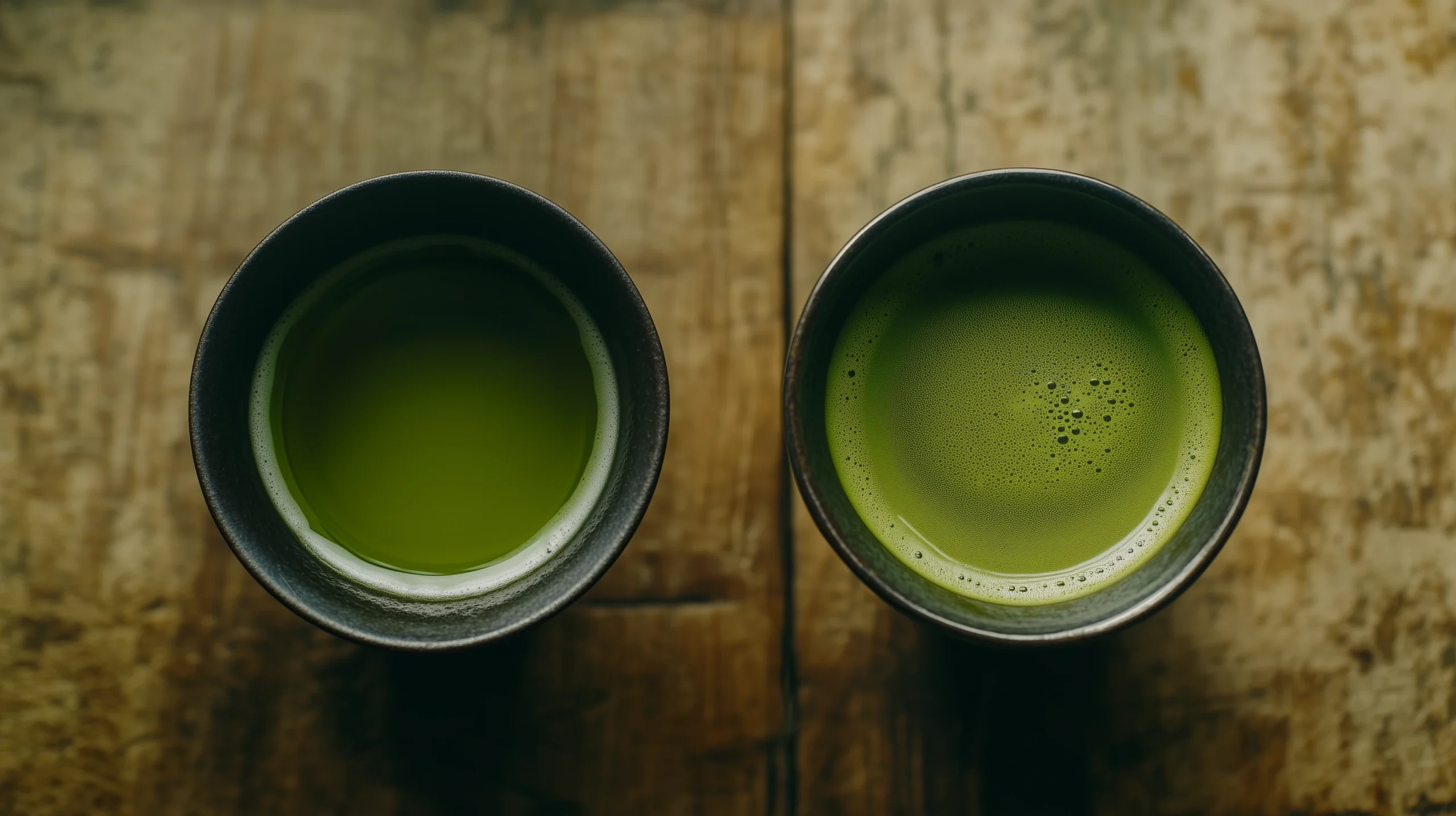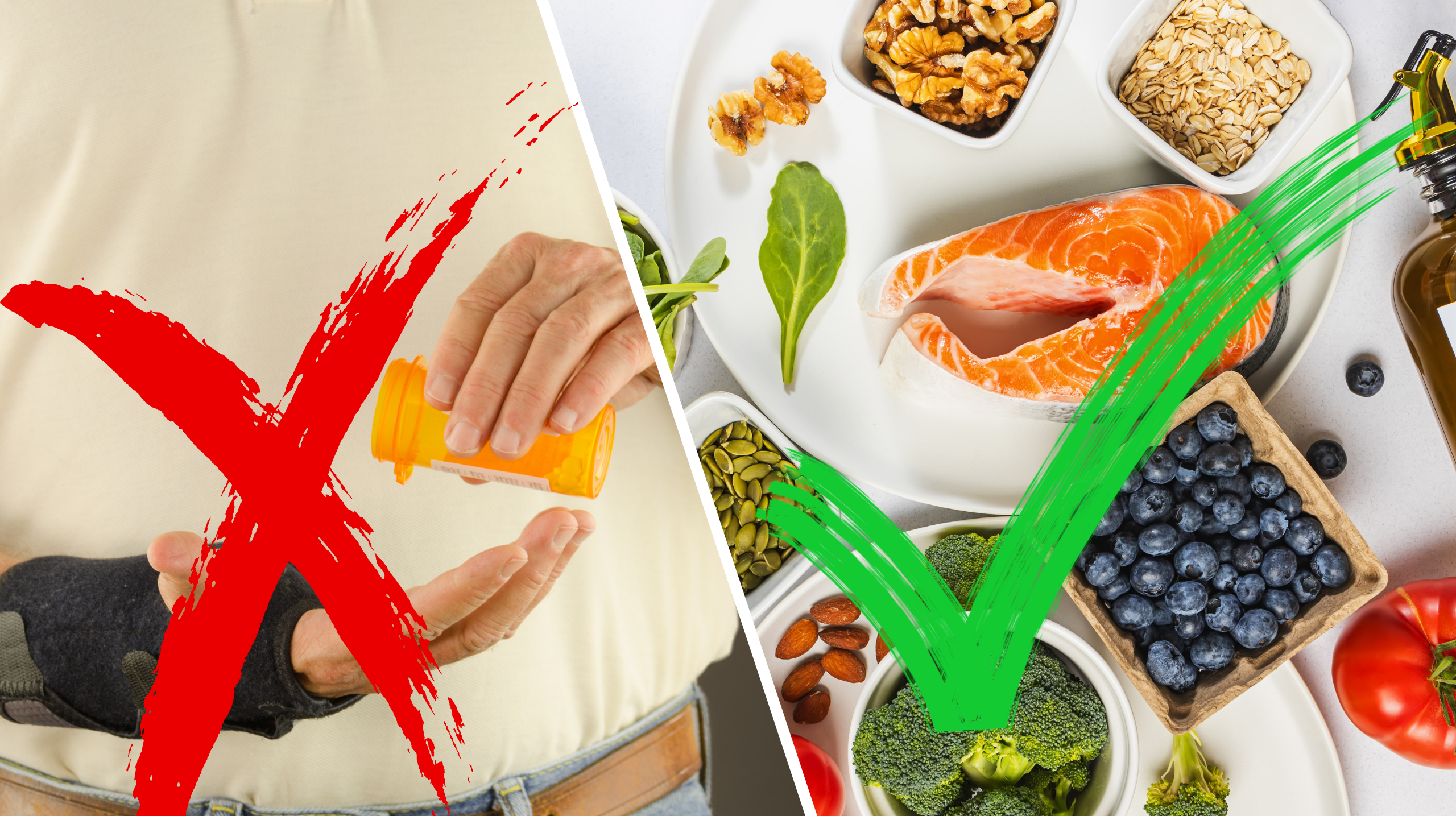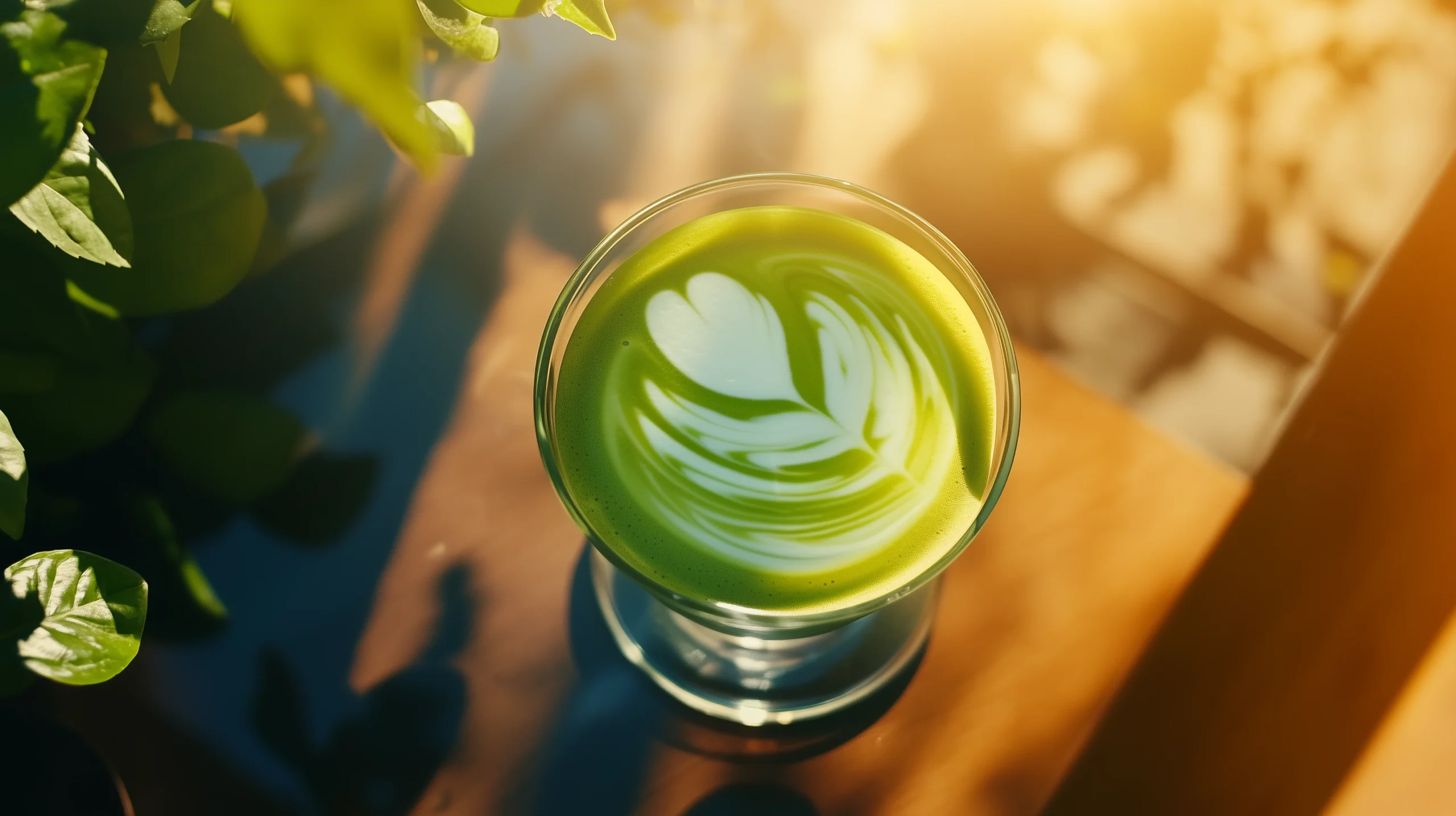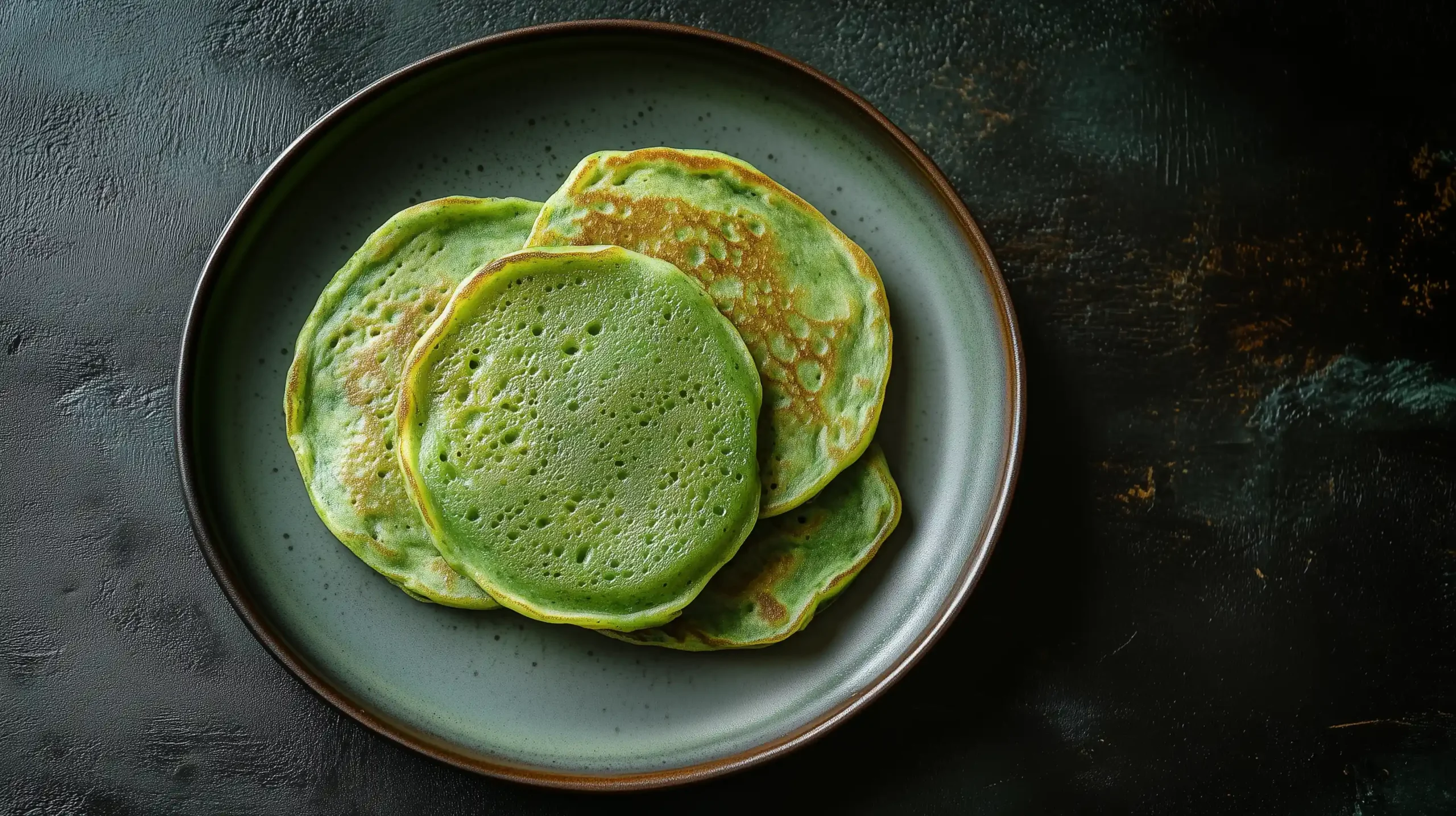When talking about matcha vs green tea, the endless argument usually focuses on their health benefits and preparation differences comparatively. What of their effects on a larger scale? We know that both derive from Camellia sinensis, the plant used for all tea. Their differences are found in how the plants are grown, processed and consumed creating vastly different health profiles.
Origin and Preparation: A Tale of Two Teas
Matcha grows from tea leaves that were covered with shade for a few weeks prior to harvesting. This process greatly reduces the photosynthesis that occurs within the plants and enhances the chlorophyll content. As a direct result, matcha leaves generate a greater numbers of amino acids such as L-theanine. Matcha is when the whole leaf is ground to a fine powder and then whisked in hot water so that one experiences all of the nutrients in the leaf. In this process, LU describes it as much different than the traditional green tea which involve steeping of leaves in hot water getting some nutrients out and losing many remaining ones to the leaves disposal.
Nutrient and Antioxidant Profile
Because matcha is not steeped, it provides a more potent punch of nutrients over steeped green tea. Example: Matcha is particularly rich in antioxidants, especially catechins like EGCG, which are powerful anti-inflammatories. Because you actually consume the entire leaf with matcha, it can contain up to 137 times more EGCG than a typical cup of green tea[^1]. And, the method of growing in a shaded environment also increases the amount of L-theanine, which is known to have sedative properties and works with caffeine to increase concentration without jitters.
Green tea, in turn, has plenty of positive health effects (high in antioxidants), but steeped types will not provide a concentrated source of these compounds. This does not mean green tea is bad for you, but rather that it just cannot offer the same powerful antioxidant kick as matcha.
Health Benefits: The Edge of Matcha
When it comes to health benefits, matcha often has the upper hand:
- Inflammation Reduction: The high EGCG content in matcha is especially valuable for its role in combating the inflammatory process. We know chronic inflammation is the precursor to a myriad of diseases from heart disease to cancer, and matcha destroys this at a cellular level – which is invaluable for your health.[^2].
- Brain Function: The L-theanine and caffeine in matcha work together to create the perfect blend. It induces a state of agreeable alertness, enhancing mental functions such as memory, attention and reaction time. Research shows improved performance in attention-dependent tasks with this pairing[^3].
- Weight Management: Matcha is a wonderful way to spike metabolism and fat burning, even more than green tea because it contains a higher concentration of catechin. This effect may help people lose weight more easily.[^4].
- Detoxification: Matcha is rich in chlorophyll which helps detoxify the body; it can alleviate inflammation by removing toxins.
- Oral Health: Both teas can influence oral health but matcha’s catechins appear to be more effective against dental disease–causing bacteria, potentially providing greater protection[^5].
Caffeine Content and Energy Levels
While both teas contain caffeine that helps provide an energetic lift, matcha is released gradually into your system due to its method of consumption. This, paired with L-theanine, allows you to have sustained energy without the crash that coffee or some high caffeine green teas can induce. Green tea has caffeine, but not as much — and it lasts for a shorter period and with less vigor than the matcha.
Practical Considerations
As far as taste and how it is prepared, matcha has a deeper, umami flavor and is typically more consistent when used in lattes (or smoothies!). But green tea is more delicate, and its myriad of different flavors by variety is perhaps better suited for traditional leaf drinking. Unlike green tea, which is as easy as steeping a bag or some leaves, matcha takes a little more effort to prepare—it has to be whisked/ frothed before consumption.
Matcha’s Superiority
Both of these teas are healthy, but matcha has earned is superiority title. With greater anti-inflammatory benefits, enhanced mental effectiveness, weight control, and a more reliable energy source; everything about matcha is preferable for health-conscious consumers. That said, it doesn’t take anything away from the strong points of green tea, which probably remain important for those who have a taste for lighter-flavored beverages or are sensitive to higher doses of antioxidants.
For those seeking to maximize health benefits through their tea consumption, particularly in reducing inflammation, our Organic Matcha represents the gold standard. We have effectively merged centuries of tradition with cutting-edge health science.
Sources:
[^1]: Weiss, D. J., & Anderton, C. R. (2003). Determination of catechins in matcha green tea by micellar electrokinetic chromatography. Journal of Chromatography A, 1011(1-2), 173-180.
[^2]: Furman, D., et al. (2019). Chronic inflammation in the etiology of disease across the life span. Nature Medicine, 25(12), 1822-1832.
[^3]: Giesbrecht, T., et al. (2010). The combination of L-theanine and caffeine improves cognitive performance and increases subjective alertness. Nutritional Neuroscience, 13(6), 283-290.
[^4]: Dulloo, A. G., et al. (1999). Efficacy of a green tea extract rich in catechin polyphenols and caffeine in increasing 24-h energy expenditure and fat oxidation in humans. American Journal of Clinical Nutrition, 70(6), 1040-1045.
[^5]: Narotzki, B., et al. (2015). Green tea: A promising natural product in oral health. Archives of Oral Biology, 60(3), 420-427.






